The 27 greatest keyboard players of all time
Elton, Stevie, Wakey and many more

The best of the best
Keyboard players often get forgotten about. They sit at the back of the stage, skilfully going about their business while the posturing and preening plays out in front of them.
But now it’s time for the very best keyboardists in popular music history to step out from the shadows and take their turn in the MusicRadar spotlight. Some will probably do so reluctantly, while others, it has to be said, will take it in their histrionic stride.
Bear in mind that our results are based on your votes; if you don’t agree with the order of our list - or feel that there’s a great keyboard player who’s been unfairly overlooked - do let us know.
Before that, we invite you to sit down, warm up your hands and revel in some serious virtuosity.
NEXT: Frank McComb

Frank McComb
We’ll be acknowledging a lot of what you might call ‘vintage’ players on this list, but we’ll start with someone a little younger. Frank McComb isn’t exactly a whippersnapper, but still got his start some decades later than most of the players we’re celebrating here.
McComb’s forte is R&B, soul and jazz. After a brief dalliance with Motown and another few years with Columbia, McComb looked to indie label Malibu Sessions for whom he cut The Truth, featuring none other than Billy Preston. Straight From the Vault saw Frank releasing through his own label, Boobescoot. The record garnered the SoulTracks Readers Choice Award for Best Album.

Lonnie Liston Smith
Growing up in a musical family, Lonnie Liston Smith was exposed to music through his father, whose visitors to the family home included Sam Cooke and others who would influence Smith’s future.
Smith started out as a piano player, first recording with Rahsaan Roland Kirk before joining up with Art Blakey’s The Jazz Messengers. He later joined forces with Pharoah Sanders, and it was in this capacity that he first discovered the electric piano.
Smith then signed on with Miles Davis, who insisted that he learned to play the organ. Only after these sessions did Lonnie form his own outfit, Lonnie Liston Smith and the Cosmic Echoes. This influential group kept at it until the mid-‘80s. Smith’s music has recently been rediscovered by a new generation of musicians who have name-checked The Cosmic Echoes records.

Ramsey Lewis
Composer, pianist and radio personality, Ramsey Lewis was the man behind the Ramsey Lewis Trio, who began as a jazz outfit, but found crossover success with the classic 1965 single The In Crowd.
Lewis recorded a classic (and charting) live version of The McCoys’ Hang On Sloopy and the traditional spiritual Wade in the Water. He’s been known to play electric pianos, but has given most of his attention to the acoustic variety.
As a radio presenter, he hosted Legends of Jazz, which eventually became a 13-part television series.

Billy Currie
If anyone could claim credit for helping to bring synthesizers back into fashion after the slash/burn of punk rock, it’d probably be Billy Currie (pictured right). A cracking violinist, he was also pretty handy with a synth.
His band, Ultravox, helped to define the sound of what would eventually be called new wave. He was enlisted by Gary Numan after Ultravox! main man John Foxx left for pastures new, only to re-appear with Ultravox (sans exclamation mark) when they reformed with Midge Ure on vocals.
Currie used ARPs, Moogs and OSCar synthesizers to provide instantly recognisable soaring lead lines and romantic strings passages that inspired a generation of synthesists.

Vadim Pruzhanov
What do you get when you merge heavy metal, power pop and 8-bit video game music? Why, DragonForce, of course.
Ukrainian keyboardist Vadim Pruzhanov has been there almost from the get-go, appearing on the debut album Valley of the Damned and everything since. Citing influences like Yngwie Malmsteen, Judas Priest and Pantera, he tears into the keys at lightening speeds. He has also been known to fire up a Theremin and strap on an Ibanez.
His singular keyboard style is responsible for the band’s signature ‘Nintendo metal’ style. It is nothing short of deranged.
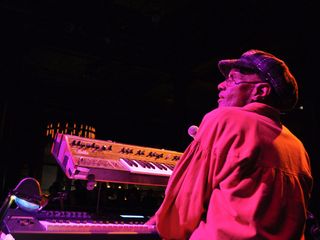
Bernie Worrell
Bernie Worrell may be the single best keyboardist in all of funk. He’s certainly one of the most influential.
Yet another child prodigy, he was playing piano at age three, composing at age eight. He attended Julliard and the New England Conservatory of Music before forming Parliment-Funkadelic with George Clinton, with whom he played piano, synths and organ, as well as co-composing some of the group’s most influential material. However, it was his use of the Minimoog that made him standout. No one played the Mini in quite same way as Worrell.
His talents would also be tapped by a variety of new wave artists, including Talking Heads, with whom he can be seen in the film Stop Making Sense. Still going strong at age 67, Worrell proves that the funk never fades.

Nicky Hopkins
The ultimate session man, pianist Nicky Hopkins was everywhere in his heyday. Afflicted with Crohn’s disease, touring was out of the question, so young Nicky was left to ply his trade as a hired gun, playing on records by The Who, Jeff Beck, Badfinger, The Beatles, Neil Young, Nilsson, David Bowie, Rod Stewart... the list goes on and on.
Perhaps his most successful stint came as the regular pianist for The Rolling Stones. He worked on every one of their studio albums from Between the Buttons through to Black and Blue, and was usually called upon for the ballads.
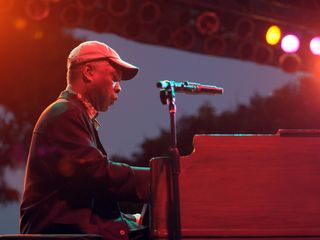
Booker T Jones
Like Stevie Wonder, Booker T. Jones (that’s his full name - the T doesn’t actually stand for anything) was a child prodigy. He played piano, sax, oboe, trumpet and trombone as a youth and was the organist at his church.
At age 16, he played sax on Cause I Love You, a hit single for Satellite Records. Satellite would give way to Stax, and Booker T. Jones would find himself as a session player with Donald ‘Duck’ Dunn and Steve ‘The Colonel’ Cropper, with whom he would cut the track Green Onions and the album of the same name.
The single is a classic instrumental with its incessant, driving Hammond M3 riff. Jones produced records for a Who’s Who of artists, including Willie Nelson and Rita Coolidge, and has also played on tracks by everyone from Elton John to Rancid. Now that’s what we call versatility.

George Duke
Genre hopper George Duke got his first taste of fame with The Jean-Luc Pnty Experience, though a great many of you will recognise him from his many outings with Frank Zappa.
Duke was originally a piano player, though he’s embraced the synthesizer with a passion. He’s worked with Cannonball Adderly, Stanley Clarke, Billy Cobham and scores of other names in every genre. Genesis named their tenth album (and final progressive rock outing) after him. His cuts have been sampled by MF Doom, Kanye West and Ice Cube.
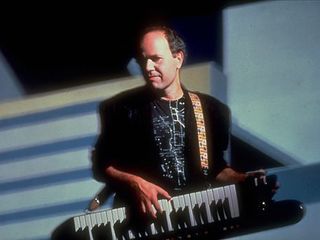
Jan Hammer
Virtuoso keyboardist Jan Hammer broke into the public eye in the early ‘70s as part of John McLaughlin’s influential Mahavishnu Orchestra. Hammer’s Minimoog stylings with that group made much use of the pitch and mod wheels which were employed to add unprecedented expression to his performances.
His signature sound was virtually indistinguishable from McLaughlin’s guitar, a fact that may have produced some amount of tension within the group. After the band split, Hammer went on to record The First Seven Days and then teamed with Jeff Beck to record the classic Wired.
In the ‘80s, Jan would form Schon & Hammer with Journey guitarist Neal Schon before signing on to score the weekly television show Miami Vice. The soundtrack hit the top of the charts and went quadruple platinum with four million sales in the USA alone.
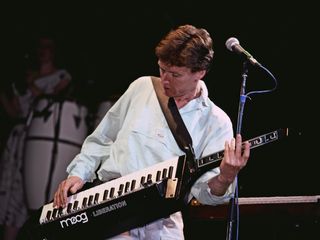
Steve Winwood
Another boy-genius, Winwood co-wrote the Hammond-laden Spencer Davis Group hit Gimme Some Lovin’ while still in his teens. He then jumped ship and joined Traffic, who produced a number of now-classic rock albums.
Winwood was 20 when he played organ on Hendrix’s Voodoo Chile. As if that wasn’t enough, he formed the supergroup Blind Faith, reformed Traffic and then had his first solo success with Arc of a Diver in 1980, an album that featured the hit single When You See a Chance, which came with an instantly hummable Multimoog lead line.
1986 saw the release of Back in the High Life, and its single Higher Love saw him back in the charts.
...
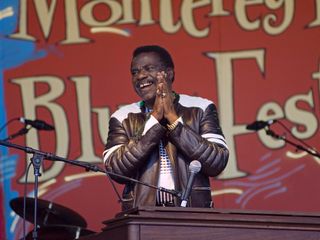
Billy Preston
Yet another brilliant keyboardist who got his start early in life, Billy Preston is one of only two additional musicians ever to receive full credit on a Beatles record. The late-in-the-game single Get Back is credited to “The Beatles with Billy Preston”.
He also worked with The Rolling Stones, Little Richard, Ray Charles, Joe Cocker, Sam Cooke, Elton John, Aretha Franklin, The Jackson 5, Johnny Cash, Sly Stone, the Red Hot Chili Peppers and many, many more before his death in 2006.
Preston rocked the Fender Rhodes like no one else and gave the Hammond a good kick in the backside, too.

Joe Zawinul
Like a lot of guys on our list, Joe Zawinul played with Miles Davis, before co-founding the seminal fusion group Weather Report and then Zawinul Syndicate.
His music is often playful and experimental. He famously patched one of his ARP 2600s so that the keyboard played in reverse, allowing for some interesting lines when doubled with a conventionally patched ARP.
With Weather Report, he cut Birdland, his most recognisable track. An imitation of his signature patch for the piece has become a standard preset on many a modern synthesizer. Zawinul often infused his cuts with an ethnic groove, long before ‘World music’ became a hipster catch phrase.

Jean Michel Jarre
Jean Michel Jarre is the man behind the biggest selling French album ever: Oxygene. Yep, you read that right. Oxygene hit the shelves in 1976, somehow grabbing and holding the attention of record buyers just as punk rock was forever changing what was considered cool.
With its sputtering rhythm machines, synthesized sonorities, pleasant chord progressions and lengthy track listings, Oxygene was the antithesis of punk. It wasn’t angry. There were no lyrics. Yet it flew off of store shelves and continues to do so even to this day.
It introduced the world to the estranged son of a beloved film composer and helped to catapult him to such a position that he could draw more than a million spectators to a single concert.

Ray Manzarek
When most people think of The Doors, they understandably hear the haunting voice of Jim Morrison. However, that voice was just part of the magic potion forged by the Latin-tinged drumming of John Densmore and the jazz-influenced guitar of Robby Krieger.
Yet one of the group’s unique features was the absence of a bass guitarist. That roll was handled by keyboardist Ray Manzarek (pictured seated above), who used a Rhodes Piano Bass to great effect. He also championed the Vox Continental organ, a favourite of psychedelic bands of the day.
It’s Manzarek’s calliope-like intro that kickstarts the band’s most famous tune Light My Fire, and his moody groove that propels Riders on the Storm.

Richard Barbieri
Richard Barbieri first hit the stage with Japan, a band for whom he provided not flashy leads or banging bass lines, but rather subtle shadings of colour and hue. His ability as a sound designer took precedence over flashy playing and earned him the respect of not only critics, but legendary musicians like Holger Czukay, Robert Fripp and Ryuichi Samakmoto, all of whom would be counted among his collaborators.
A decade after Japan hit the skids, Barbieri joined prog band Porcupine Tree, with whom he remains today. Though he called himself a “non-virtuoso”, he is an accomplished musician, as has become increasingly apparent in his current group.

Tony Banks
Progressive rock keyboardists are generally over-the-top, delivering lightening fast, endless solos in a variety of odd metres. Tony Banks was the exception. A founding member of Genesis, his work was tasteful and often restrained.
Whether he was whipping up a maelstrom of Mellotron to herald the Watcher of the Skies or tickling the ivories for the tinkling intro to The Lamb Lies Down (on Broadway), his playing was always in service to the song.
That isn’t to say that he couldn’t rock a solo - check out the blistering Riding the Scree, or the plaintive wailing ProSoloist licks at the end of Entangled for example - it’s just that Banks exhibited a sense of arrangement and purpose so often missing in the excesses of his peers.
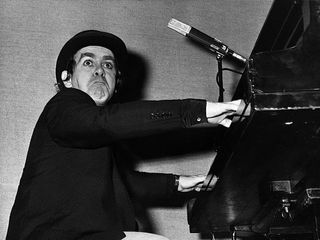
Elton John
What can we say about dear ol’ Reg? After all, the guy’s talents have earned him a knighthood. Billboard magazine ranks him as the most successful male solo artist ever.
If you’ve never heard his music then, well... who are we kidding? Everybody has heard him. His voice has changed over the years, but his piano playing has remained rollicking, rocking and resounding.
He helped to solidify the piano’s place in rock and roll just as synthesizers were making their presence known. He’s sold 250 million records over the course of 40 years, as well as racking up six Grammys, an Oscar, a Golden Globe and a Tony Award.
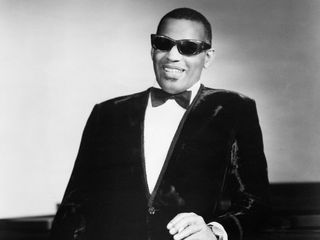
Ray Charles
What can we say about Brother Ray? Rolling Stone magazine rated him as the 10th greatest artist of all time. His melding of styles influenced artists from a wide range of genres, and his own records are classics, running the gamut from country to gospel to R&B.
He hit the pop charts with What’d I Say, garnered a Grammy for Georgia On My Mind and another for Hit the Road Jack, and ruled the top of the charts for ten weeks with I Can’t Stop Loving You. He rocked the shop in The Blues Brothers movie and was the subject of a big screen biopic in 2004. He passed away in the same year, leaving behind an unmatched cultural legacy.
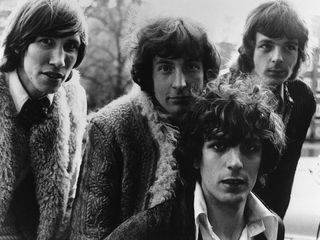
Rick Wright
Like Tony Banks, Rick Wright (pictured on the right) was less a showy player than a musician who knew exactly which notes to play and which to leave out. His training and love of jazz made him one of Pink Floyd’s most musically-gifted members and his sensibilities can be heard on the wistful piano of Us and Them.
He was no slouch with a synthesizer, either. His performances with EMS VCS3 and Minimoog on the band’s classic Wish You Were Here have become etched into rock history. Musicians are still trying to suss out how he achieved his sounds on Shine On, You Crazy Diamond. An effortless player, Wright was the breath that kept Pink Floyd alive.
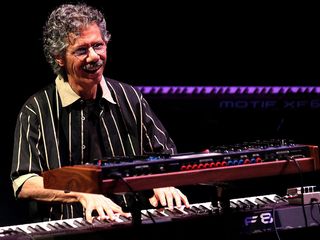
Chick Corea
A pioneer of jazz fusion, Chick Corea got his first big gig playing with Cab Calloway before collaborating with the likes of Bill Mitchell, Herbie Mann and Stan Getz. He stepped into the spot previously held by Herbie Hancock in Miles Davis’s group and played on such classics as In a Silent Way and Bitches Brew. Corea’s own fusion group Return To Forever saw him embracing the Moog in addition to his usual Rhodes.
Corea has bounced back and forth between electric and acoustic keys for decades, eventually composing piano concertos. He recently joined forces with John McLaughlin to form the 5 Peace Band.
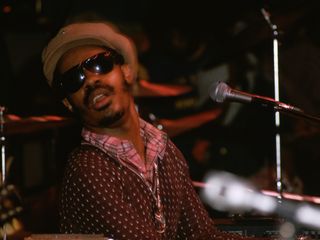
Stevie Wonder
Stevie Wonder was already a star when he celebrated his 21st birthday. He was also tied to a record contract that prevented him from releasing the sort of music that he wanted to make.
When he did hit 21, he renegotiated his contract, allowing for both a higher percentage rate and creative autonomy. Hitting the studio with Tonto’s Expanding Headband (and their magnificent modular synthesizer) in 1972, he produced Music of My Mind, followed by Talking Book, Innervisions, and Fulfillingness’ First Finale, each one a masterpiece of funky Clavinet, analogue synthesis and socially-conscious lyrics. He followed these award winners with a series of chart-topping singles and albums that would define the sound of the ‘80s.
You’ve heard Superstition, Higher Ground and Living for the City. Do we need to say more?

Herbie Hancock
Though Herbie Hancock has the chops to share a stage with Miles Davis and to create such jazz classics as Watermelon Man and Cantaloupe Island, he may forever be remembered for a one-off novelty track called “Rockit”, a song that (along with its groundbreaking video) was all over MTV in the network’s early days.
As cracking a track as Rockit is, it is not indicative of Hancock’s style of electrified jazz. However, it does showcase that he was that rare jazz performer who did not shy away from the wonders of technology.
It received criticism from purists, but Hancock was used to it. He’d gotten the same sort of guff when his Headhunters group crossed the line into pop and funk music in the early ‘70s. Nevertheless, the man’s playing is impeccable.
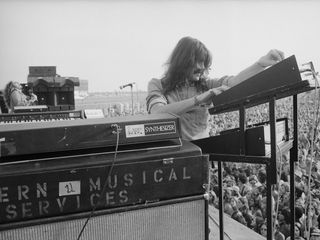
Jon Lord
Deep Purple are responsible for an awfully lot of what we would come to know as heavy metal, so it might be surprising to learn that the band’s keyboardist was one of their driving forces.
A classically-trained pianist, Lord fused blues, jazz, rock and classical styles to add a bit of sophistication to the bombastic barrages of Deep Purple, Whitesnake and more. He focused on the Hammond C3, though he was equally adept with a Minimoog. An outstanding and often overlooked player.

Rick Wakeman
Wakeman, it turns out, is prog rock’s class clown. Possessed of a sharp and irreverent wit of which the public has only recently been made aware, his skills on the keys are no laughing matter.
He ditched his studies for an increasingly demanding career as a session player for the likes of T-Rex and David Bowie. This too, would be left behind as he rocketed to fame and fortune as Tony Kaye’s replacement in Yes. His on-again-off-again tenure in that band was often interrupted by a solo career which yielded concept albums that combined his skills on the Minimoog, Clav, Mellotron, piano and more.
Often an object of ridicule for his stage garb of silver capes and flowing locks, he is highly respected for his skill and humour.

Keith Emerson
Keith Emerson: the man who brought the keyboardist out from behind the organ (and then proceeded to throw said organ about the stage after teaching it a hard lesson involving knives).
He (literally!) wrestled with his Hammond, climbed the rafters and showered sparks from the end of his custom Moog ribbon controller. Of course, such histrionics wouldn’t have been worth a hoot if the feller couldn’t play. But play he did. From blistering rock leads to impossibly fast baroque keyboard runs, Emerson has done it all.
A surprisingly ballsy rocker, he wasn’t afraid to tone it down. His famous Lucky Man solo is etched into rock and roll history. Perhaps best of all, he dared to drag his monster modular Moog on stage.
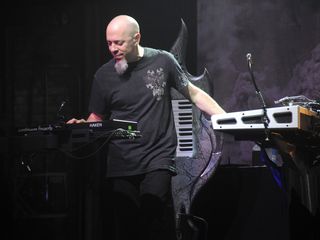
Jordan Rudess
One can hardly skim a music magazine without seeing mention made of Mr Rudess. He has achieved fame as a keyboard virtuoso, a feat that seems almost impossible in a post-punk world.
Yet the man’s skills are undeniable. He studied classical piano at Julliard at the age of nine before becoming enamoured of the synthesizer as a teenager. His first solo album earned him a Best New Talent award in a Keyboard magazine poll before he joined up with the Dixie Dregs and Dream Theater, with whom he still plays.
A master behind the ivories, he’s equally adept with the Haken Continuum Fingerboard, steel guitar and even on his iPad.
Liked this? Now read: 15 ultimate synth icons

MusicRadar deals of the week: Score over £400 off PRS and Epiphone guitars, $100 off Yamaha and Roland pianos, and so much more
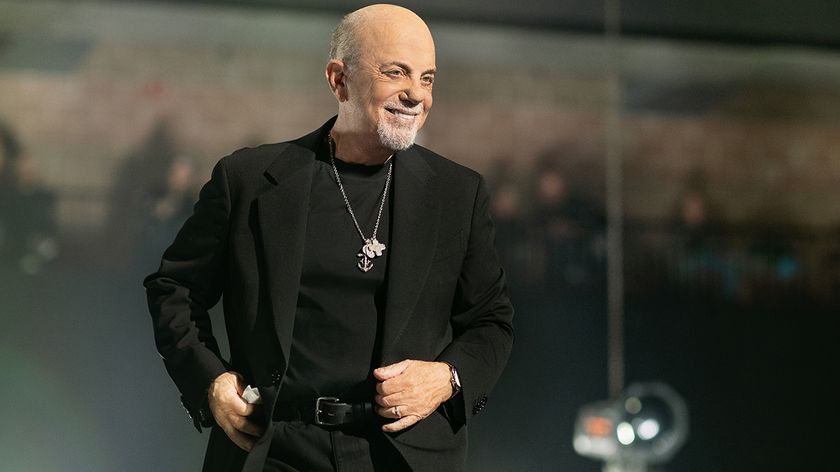
“For those who think they know Joel’s story, as well as those who are not as familiar, I believe this two-part film is both a revelation and a surprise”: New Billy Joel doc is on the way

MusicRadar deals of the week: Score over £400 off PRS and Epiphone guitars, $100 off Yamaha and Roland pianos, and so much more

“For those who think they know Joel’s story, as well as those who are not as familiar, I believe this two-part film is both a revelation and a surprise”: New Billy Joel doc is on the way









